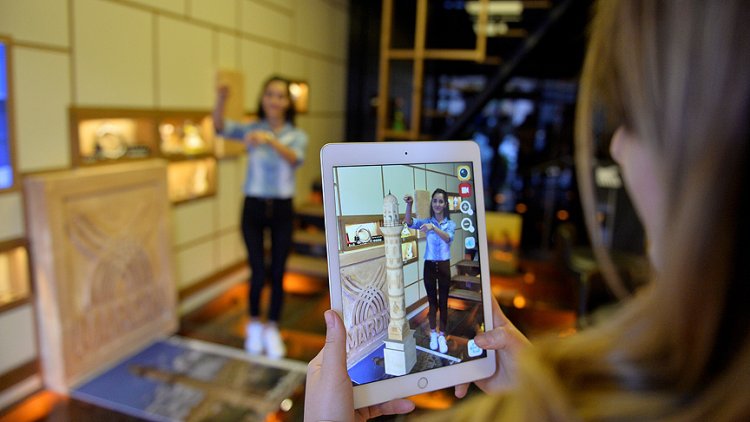AR Will Revolutionize The Way We Learn at School, Work and Life
Some people are visual learners, which means that the ability to "see" something (rather than read or hear) is much more effective for them.

Some people are visual learners, which means that the ability to "see" something (rather than read or hear) is much more effective for them. This is exactly where virtual reality (VR) and augmented reality (AR) can add real value to the learning process. These "augmented reality" (XR) technologies can create three-dimensional worlds where students can visualize concepts and learn new skills and information interactively.
Here are 5 areas where we believe VR and AR will revolutionize education:
1. Creating a more immersive experience for schoolchildren
Thanks to its three-dimensionality, VR can transport students to different places and even different times. A great example of this is 1943: Berlin Blitz, a VR experience produced for the BBC by Immersive VR Education. Recreating the events of September 3, 1943, this experience recreates the true story of a Lancaster bomber in the attack on Berlin.
This VR experience recreates this historic event using a mix of VR simulations and real archive footage from inside the airplane. VR is a great way to relive history and make it more accessible.
2. Exciting new trips
School trips can be expensive, which means they are not suitable for all students. But with VR, trips can become much more accessible, affordable, and more interesting. After all, any experience with VR is theoretically possible. walk on the moon? No problem. Seeing polar bears in the North Pole? Certainly.
Google is removing the typical barriers to trips and creating great experiences for students through the Google Expeditions app. Designed for teachers to use with their students, the app offers hundreds of different adventures in different fields such as history, science, art and the natural world. In VR experiences, students can be in exciting locations in destinations such as the Louvre Museum or Mount Everest.
3. Transforming hands-on learning
Did you ever have to cut a frog in high school? This terrifying experience can now be a thing of the past with AR.
Froggipedia is an AR app that lets students learn about frog's internal organs. With this application, students can examine the organs of frogs individually or see the complex internal structure of the organ systems of frogs. In doing so, they do not harm any living thing. Also, students can see the incredible transformation that frogs go through from egg to larva, then from small frog to fully grown frog.
4. Enhancement of learning in the workplace
In the future, all types of workplace training will be enhanced with VR and AR. VR can be particularly useful when it comes to simulating dangerous situations or scenarios that are difficult to simulate in real life.
A great example for this is the Australian company FLAIM Systems. Parts of Australia and the Americas have been devastated by wildfires in recent years. That's why some fire stations in Australia and the US use FLAIM to train their firefighters. This VR technology offers firefighters the opportunity to experience virtual scenarios that are very dangerous or difficult to simulate in the real world, including forest fires and aircraft fires. It realistically handles all fire, smoke, water and firefighting foam and heat thanks to a special heat suit that can heat a firefighter up to around 100 degrees Celsius depending on proximity to the virtual fire. The system even simulates the pressure that firefighters feel from the water hose.
5. Improving the lifelong learning experience
AR or VR can enhance anything you want to learn in your daily life. Let's take public speaking as an example. Award-winning VR provider VirtualSpeech has created a VR tool to help people practice public speaking in a more immersive and realistic way.
VirtualSpeech's VR e-Learning courses can help you hone your skills to master speaking in front of a large audience or give better presentations to smaller audiences. Once you get a VR headset (they are no longer as expensive as they used to be), you find yourself in front of a simulated audience, plus you can select a different number of audiences. You can then practice your speech or presentation (with your own slides if you want), get real-time feedback on your oratory and monitor your progress over time. This tool can even be used by companies to train their teams. 95% of VirtualSpeech users say that practicing with VR helps them better prepare for situations they may encounter in the real world.
As a result, from primary school to university level, or in lifelong learning and corporate education, augmented reality technologies have the potential to make learning more effective, more engaging and more relevant for today's technology-driven world.